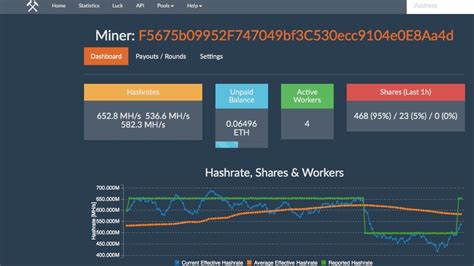Ethereum: Optimization of the performance of the mining pool
As a large number of minors join the Ethereum network, creating a formidable force that requires a robust and effective system to guarantee maximum performance. The main function of a mining pool is to solve complex mathematical equations, using the computing power to validate transactions on the Ethereum blockchain. The success of a mining pool is strongly based on its ability to optimize various components for optimal performance. Here are some key components on which we should focus during the attempt to maximize the performance of a mining pool:
1. Configuration of the pool:
- hash rate: The hash rate represents the number of calculations per second, measured in GHS (Gigahash). A higher chopping rate increases efficiency but can also increase the electricity costs.
- Energy consumption: Electricity costs and environmental impact are critical factors when selecting a power source. Energy economical pools can reduce costs and minimize their ecological footprint.
2. Pool network:
- The technology of the large distributed book (DLT): DLT is the backbone of Ethereum, allowing secure and decentralized transactions. A well -designed DLT network ensures effective validation and processing of transactions.
- Consensus algorithm: Consensus algorithm determines how the nodes of the network validate transactions before being included in the blockchain. Popular algorithms include proof of work (POW) and proof of delegated appearance (DPO).
3. Pool software:
- Pool management system: A robust pool management system is essential to monitor performance, manage pool resources and solve problems.
- Optimization of pool algorithms: Optimization of pool algorithm can cause significant performance improvements.
4. Material components:
- GPU cards: The graphics treatment units (GPU) are widely used in Ethereum extraction pools because of their high computing power / cost ratio. However, guaranteeing the appropriate cooling and management of GPU cards are crucial to maintain optimal performance.
- ASIC minors: Integrated circuits specific to application (ASIC) can offer exceptional performance but require significant investments and maintenance.
5. Cooling systems:
- Temperature control: Efficient cooling systems are essential in hot environments to avoid overheating and ensure reliable performance.
6. Food:
- Effective power supplies:

The use of power supply with high efficiency dimensions can minimize electricity costs while maintaining optimal performance.
7. Regular maintenance:
- Regular monitoring of the pool: Regular monitoring Pool performance, hardware and software components guarantee that problems are resolved quickly.
- Updates of Pool algorithms: Keeping the algorithm of updated pool can help maximize performance and reduce the risk of obsolete or ineffective algorithms.
By focusing on these key components, a mining pool owner can optimize its system for maximum efficiency and minimize energy consumption while guaranteeing reliable performance.
